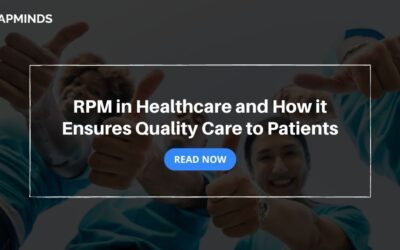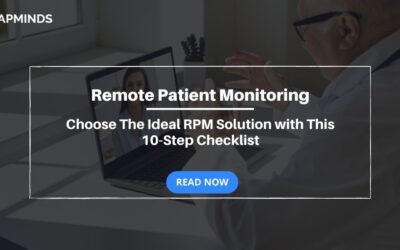Learn How to Do Remote Patient Monitoring Effectively
Remote patient monitoring helps healthcare providers to remain aware of their patient health conditions and treat them remotely via digital devices. RPM gives additional focus to health conditions that need extra attention from healthcare experts. Today,
healthcare providers are facing lots of challenges while implementing RPM
services. So to be successful with the process, the providers need to follow
these five important steps.
1. RPM
Planning Should Be Your First Step
Healthcare
organizations should involve two groups in RPM planning. The first is the
clinical group, which must define the patient population that will be monitored
and the problem it’s trying to solve with remote patient monitoring. This group
also must determine how monitoring will be conducted; for instance, via devices
such as glucose or heart monitors, or by questionnaires that can be
administered through secure email or a patient portal.
The other
group is the IT team. Often, clinicians don’t realize that their plans for RPM
may face technical limitations. They also might not have extensive experience
with implementing technology, especially solutions that are located in a
patient’s home, such as wearable devices. It’s critical to have a partnership
between IT and clinical stakeholders from the very beginning. RPM planning should
first consider the clinical problem the team is trying to solve, then identify
the monitoring tools needed to accomplish this goal.
2. Define Clear Objectives For Your RPM Process
The most
important thing to communicate about RPM is why you’re doing it. Both the staff
and patients need to believe in what you’re doing; otherwise, participation
will quickly fade. Tailor communication toward each group. Both clinicians and
patients must understand the training they receive: Patients must demonstrate
that they can submit their weight electronically; if they can’t, they need
further training. Clinicians must be able to determine which patients are
having problems.
When you’re running an RPM program, you also must ensure the technology works. For example, if you send a patient home with a scale that depends on internet access, but the patient doesn’t have the internet at home, you need to find a way to provide it, such as through a cellular device. Ultimately, ensure you have processes for emergencies. If a patient reports an abrupt, massive weight increase or alarming psychiatric symptoms, near real-time response expectations must be clear for all stakeholders.
RELATED: EXPERT’S GUIDE:WHY TO FOCUS ON REMOTE PATIENT MONITORING?
3. Choose
RPM Devices Based On Your Practice Needs
Hospitals
have several options for managing RPM devices. Some manage the entire process
in-house: The provider buys and configures the devices so they feed patient
data to the electronic health record. Some hire companies to handle the entire
RPM process, including case management. Each hospital should choose the
approach that works best for its patients and staff.
In making
this decision, you need to understand where you have the necessary expertise
and bandwidth. Devices may break or malfunction, and you can’t just leave
patients to troubleshoot on their own or they’ll abandon the endeavor. Decide
what you’re willing to take on and what’s cost-effective.
4. Don’t Over-complicate Your RPM Program
Keep it as
simple as you can and build success incrementally. One of the most effective
kinds of RPM is a phone call. For example, our health systems use structured
discharge phone calls with the patient, which can be made by staff members or
by an automated phone system.
Simple RPM
approaches exist for several diseases. CHF is one of them because patient
monitoring is straightforward; it typically involves having patients use a
scale to record their weight. If the weight starts to increase, you can quickly
manage the situation before problems occur. Diabetes is another good example;
if you monitor a patient’s blood sugar, it’s easy to intervene.
The issues
you monitor should be those you can address with an action such as changing a
patient’s medication or increasing the dosage.
5. Measure Success By Patient-Oriented Outcomes
Finally,
determine how to measure success. A process-oriented outcome may increase the
number of patients participating in an RPM program. You can evaluate patient
outcomes and engagement and observe impacts on satisfaction, financial and
operational measures. Having these metrics will allow your practice to
determine whether to expand the remote patient monitoring program to more
patients or rework the programs to perform better. If ready for expansion, the
data will help justify continued or expanded funding.
Is Your
Practice Ready To Implement Remote Patient Monitoring?
In the current healthcare landscape, adding remote patient monitoring and its related technologies like telehealth may prove to be your base start to promote quality of care. Implementing RPM is not just an easy process. By understanding these effective steps, CapMinds will help your practice to deliver a meaningful program for your patient population.
Looking for guidance to implement remote patient monitoring effectively?

 Author: Pandi Paramasivan
Author: Pandi Paramasivan

